Bob Hobbs, Senior Vice President, Strategy & Products, Lakeside Software, on the opportunity for CIOs to transform IT into a strategic driver for business growth.
Enterprise IT has a tremendous opportunity to unlock savings and boost efficiency by redirecting resources, such as $9.6 million (£7.5M) lost on optimising laptop upgrade cycles or $4.3 million (£3.4M) on software licenses.
The root cause of these inefficiencies lies in reactive IT models that fail to optimise resources. However, forward-thinking companies are embracing proactive, data-driven IT, using analytics to uncover hidden costs, enhance visibility and automate processes. This shift is reducing waste, improving financial performance and digital employee experience – all while ensuring IT investments align with broader business priorities.
Through data collection and analysis, now enhanced by AI, significant amounts of IT waste are being revealed. One major bank discovered through real usage data that only 600 of its 7,000 laptops actually needed replacing, saving $9.6 million (£7.5M) by ditching the idea of mandatory annual refresh cycles. Similarly, a financial services company uncovered a $4.3 million (£3.4M) software black hole – licences paid for but never used. Industry estimates suggest on average, 55% of IT budgets are spent on maintaining business operations, with only 19% directed toward new capabilities..
CIOs are increasingly focused on maximising the return on IT investments, rather than simply increasing IT spend. According to EY, 37% of CEOs intend to reallocate capital from other budgets to fund technology investments, while 26% plan to redirect funds specifically from existing IT budgets. This shift underscores the need for greater efficiency and strategic cost management, ensuring IT spending delivers tangible business value rather than simply maintaining legacy systems.
But the antidote is emerging and it starts with visibility. By gathering data from endpoints – every device across the IT estate – through digital employee experience (DEX) monitoring software, firms gain a clear-eyed view of what’s truly needed, uncovering waste like over-provisioned hardware. DEX platforms use an array of sensors to collect data across various endpoints, with ours, for example, analysing over 10,000 data points every few seconds. This data powers an embedded AI engine that predicts and resolves issues before they impact end users, enhancing system reliability and user satisfaction.
However, none of this is possible without high-quality data. Gartner estimates that poor data quality costs organisations an average of $12.9 million per year. To make reliable, proactive IT decisions, the data collected must be broad in scope, deep in detail, and frequent enough to reflect real-time conditions. Without trustworthy data, organisations risk making costly miscalculations – replacing IT assets unnecessarily, failing to spot genuine risks, or overlooking optimisation opportunities.
Real-time insights build on this foundation, catching issues before they ripple out to employees. Picture an application slowing across a fleet of machines: in a reactive world, IT scrambles after complaints pile up, but with live diagnostics – tracking memory, latency, or crashes – teams can intervene instantly. A global insurance company, for example, identified an incident that, despite not being reported by users, was happening on a number of machines across the estate. The incident was related to a GPO that was spawning 2 cmd.exe instances that used ~20% CPU. It was fixed before staff noticed, saving thousands in lost productivity. This proactive stance ensures digital employee experiences stay seamless, nipping frustration and downtime in the bud.
Intelligent action and automation must work together to prevent IT issues before they escalate. Predictive analytics identify risks – like a server nearing overload or a software license reaching capacity – and alert IT teams before disruptions occur. AI-driven insights enabled an insurance firm to catch a CPU issue early, while another enterprise flagged a bandwidth-heavy update affecting 200 devices, resolving it before users experienced slowdowns.
Automation, on the other hand, executes fixes at scale. Repetitive issues – password resets, software stalls, or update delays -consume IT budgets and manpower. One company automated responses to 800 tickets per month, saving $200,000 (£160K) annually and cutting MTTR (Mean Time to Repair). This ensures IT teams can focus on higher-value challenges, while employees stay productive without unnecessary disruptions.
The payoff is transformation: IT evolves from a cost centre into a competitive edge. Strip away the waste – $9.6 million (£7.5M) on laptops, $4.3 million (£3.4M) on software – and those funds fuel innovation. C-suite leaders are also looking at AI to drive efficiency, with research from Boston Consulting Group revealing that over half of executives expected AI to deliver cost savings, with 50% anticipating reductions exceeding 10%, primarily through increased productivity in operations, customer service and IT.
This aligns with the DEX trend, where systems don’t just run—they enhance how people work. For CIOs, it’s a chance to move beyond keeping the lights on and start lighting the way forward, turning savings into strategy and innovation.
Looking ahead, the IT management landscape will continue to evolve with the integration of AI and machine learning, driving more proactive strategies. As enterprises increasingly move toward data-driven IT models, continuous improvements and seamless integrations will become essential, requiring robust monitoring tools to manage these changes without disrupting user experiences. AI-driven analytics will be key in predicting potential issues and automating resolutions, enhancing both operational efficiency and the digital employee experience. For CIOs, this shift represents a unique opportunity to transform IT into a strategic driver for business growth, turning insights into actionable strategies that enhance productivity and innovation.



